15 Amazing Plants That Start With W
The joy of gardening and plant parenting is the ability to customize your approach. Whether you prefer plants of a certain color or theme, it’s your journey.
Choosing plants that start with a certain letter is a fun way to play into a theme or give a wonderful, living gift. With that in mind, here are 15 amazing plants that start with W.
Let’s dig in!
1. Wallflower
Botanical name: Erysimum spp.
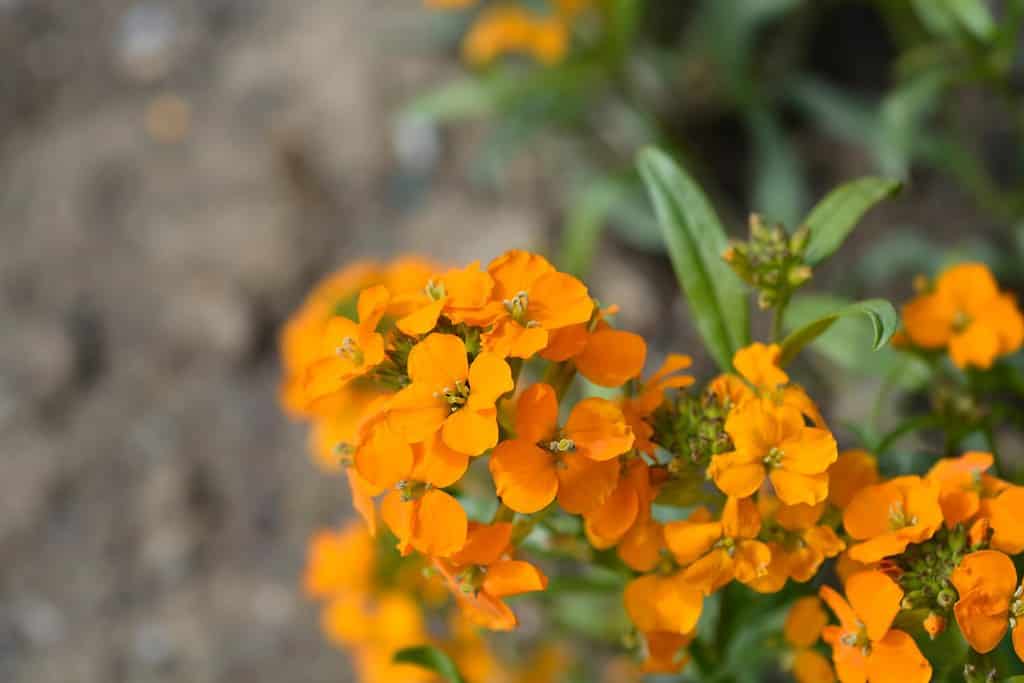
©Nahhana/Shutterstock.com
Wallflowers, scientifically known as Erysimum, are a genus of flowers known for growing out of cracks in pavement and along walls. The common term “wallflower,” referring to someone shy who stays out of the fray, is derived from these timid blooms.
Wallflowers will grow in USDA zones 6-10 with partial to full sunlight and well-draining soil. They’re resilient as long as their roots aren’t left to soak. This genus offers delicate blooms in shades of white, orange, red, yellow, purple, and pink.
2. Water Avens
Botanical name: Geum rivale
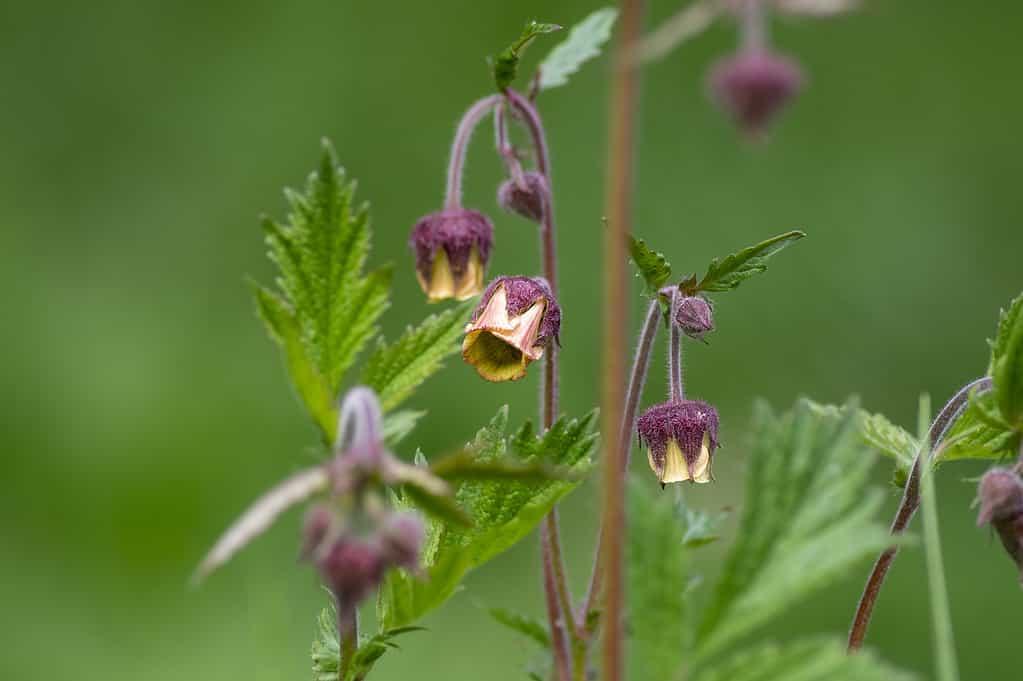
©Iva Vagnerova/iStock via Getty Images
This unique plant is native to parts of Canada, the United States, and Europe. It has an eye-catching burgundy stem and flower cap, with delicate orange petals in a hanging bell shape. You can typically find it growing in moist soil alongside lakes, ponds, and creeks.
This pollinator favorite is closely related to the wood avens (Geum urbanum). It grows well in USDA zones 3-7 with full sunlight to partial shade and frequent watering.
3. Water Lily
Botanical name: Nymphaeaceae spp.
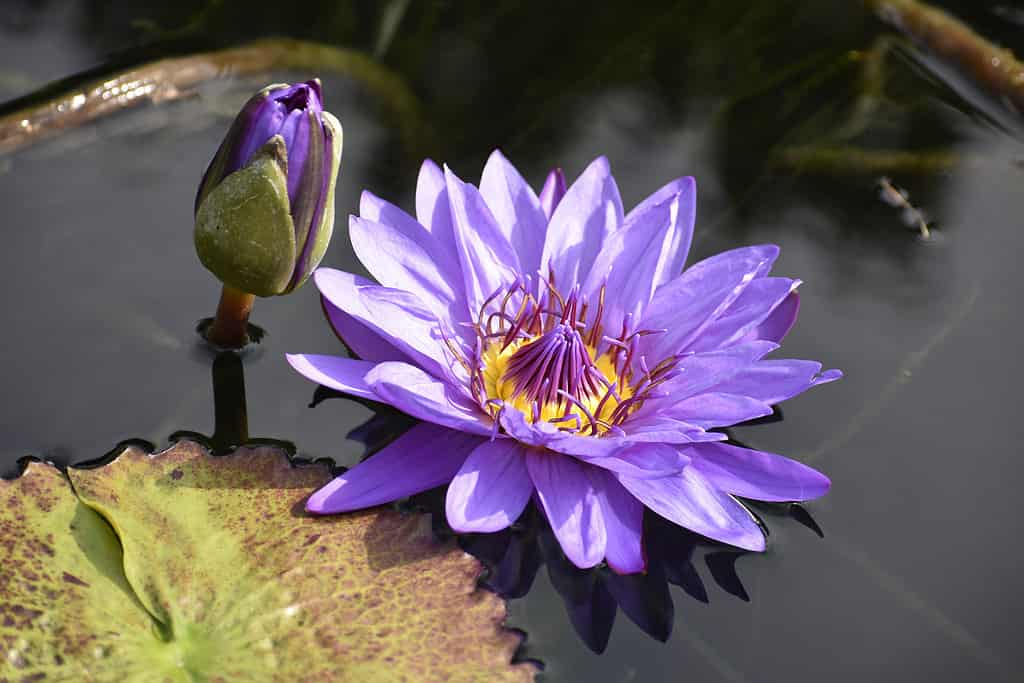
©gurineb/iStock via Getty Images
Water lilies are a large family of plants classified as Nymphaeaceae. These stunning blooms grow in calm lakes and ponds, with long stems that anchor the flowers in place.
You can find water lilies in shades of purple, white, pink, yellow, and orange. These beautiful aquatic blooms require full sunlight to thrive and an aquatic soil mix, which is available at most department stores.
Planting water lilies can be tricky, but once established, they grow well in USDA zones 4-11, depending on their species. Be sure to check whether you have a cold hardy, or tropical variety.
4. Watermelon Peperomia
Botanical name: Peperomia argyreia
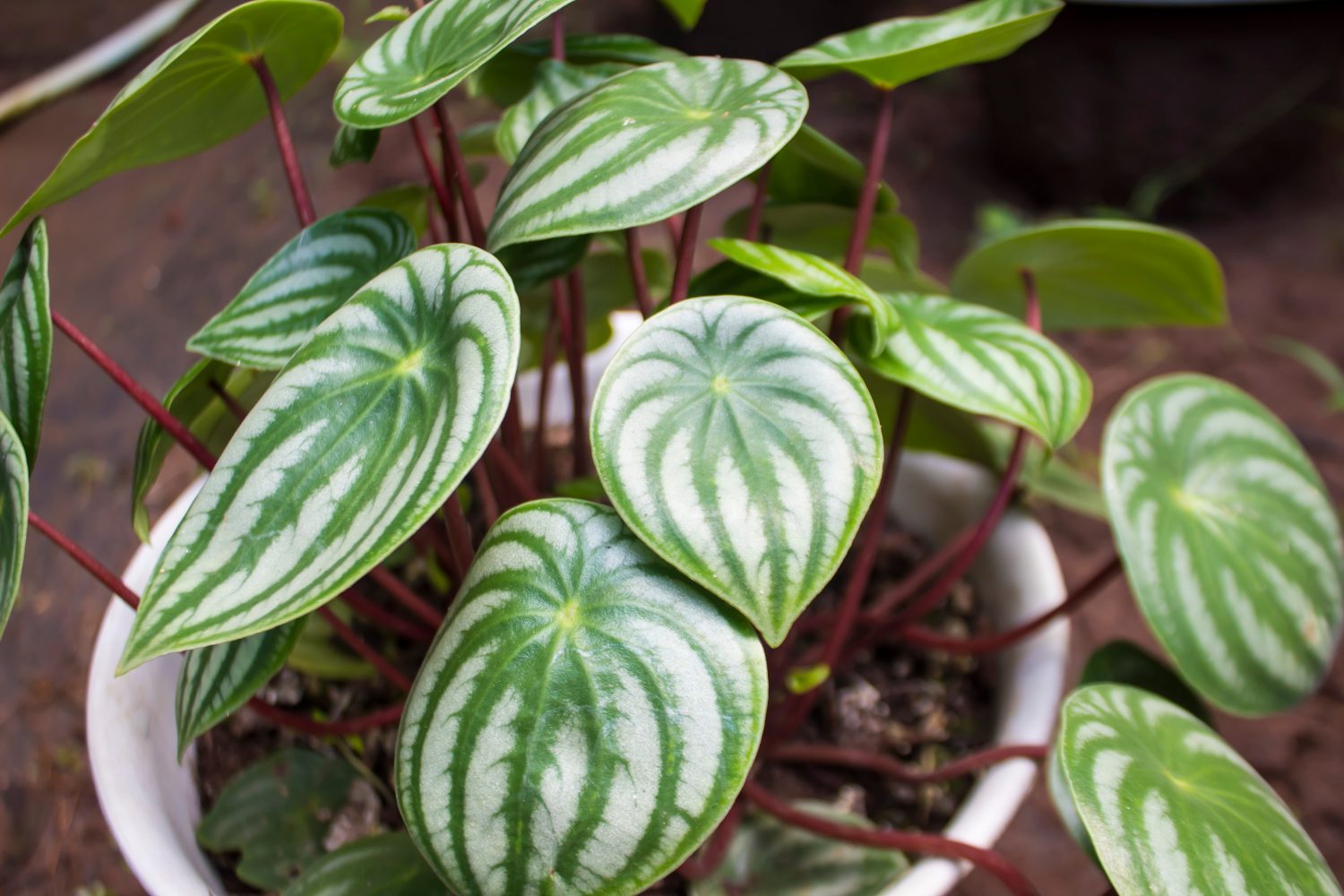
©heru pujianto/Shutterstock.com
Peperomia plants are a favorite among indoor plant parents. This variety is named for its foliage coloration, which is similar to the skin of a watermelon. Light silvery green stripes contrast against a darker green base for an eye-catching sparkle in the sun.
This tropical plant hails from South America and will only grow outdoors in USDA zones 10-12. Keep this plant in bright, indirect sunlight to prevent scorching. Peperomia grows under dense canopies in its natural environment and can’t tolerate full sunlight. Provide a pot with ample drainage and let the top inch of soil dry before watering again (but don’t let the soil dry completely).
5. Wax Myrtle
Botanical name: Myrica cerifera
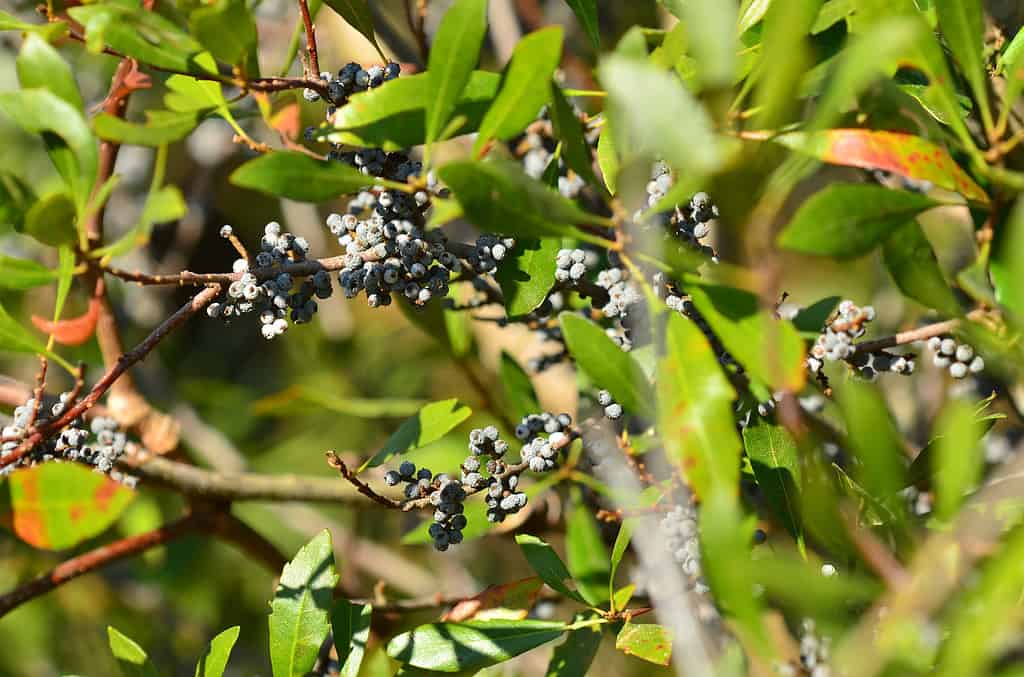
©cturtletrax/ via Getty Images
Wax myrtle is a shrub-like plant that’s ideal for creating hedges and privacy screens in your yard. You can find this plant throughout the United States and down into Central America. This evergreen shrub has silvery green foliage and produces waxy blue-white berries that attract birds.
This resilient shrub can grow in cooler climates but performs best in USDA zones 7-11. It will thrive in full sun or partial shade with well-draining soil. If you live in a cooler climate, consider wrapping your wax myrtle for the winter.
6. Weigela
Botanical name: Weigela spp.
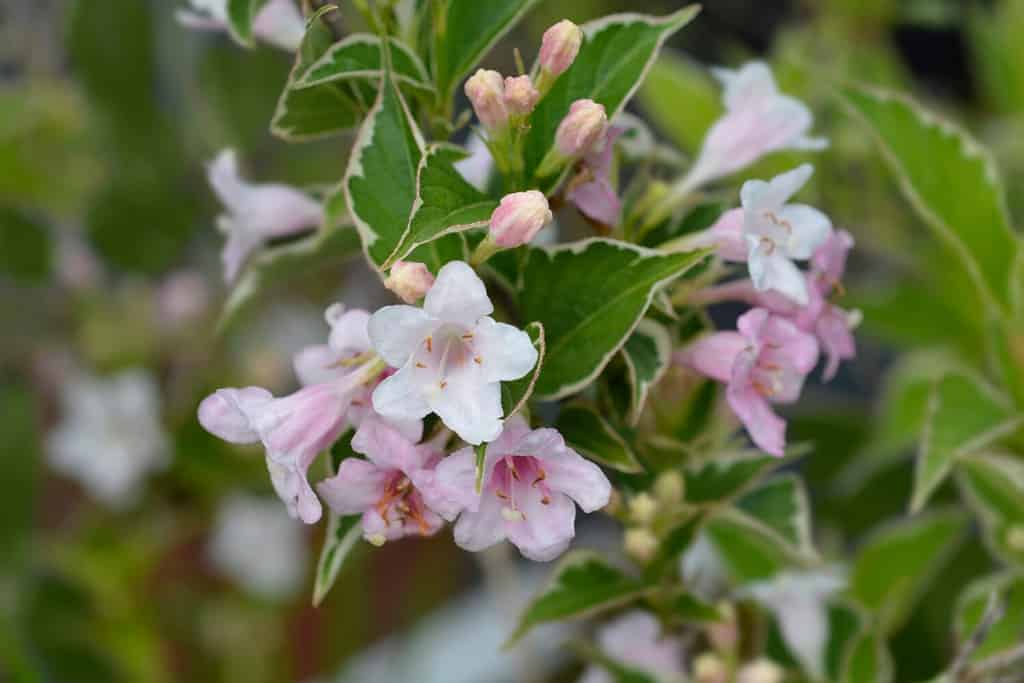
©Nahhana/Shutterstock.com
The Weigela genus contains pink, yellow, purple, and white flowering shrubs. This pet-safe plant produces stunning trumpet-shaped blooms and has won the prestigious Award of Garden Merit. Some of the most popular varieties include Weigela ‘Florida Variegata’ and Weigela Floribunda.
This lovely flowering shrub will tolerate partial shade and full sun. However, you’ll see more variegation and color definition when planted in full sunlight. Provide moist, well-draining soil in USDA zones 4-8 for best results. It’s native to Asia but isn’t invasive in the United States.
7. White Campion
Botanical name: Silene latifolia
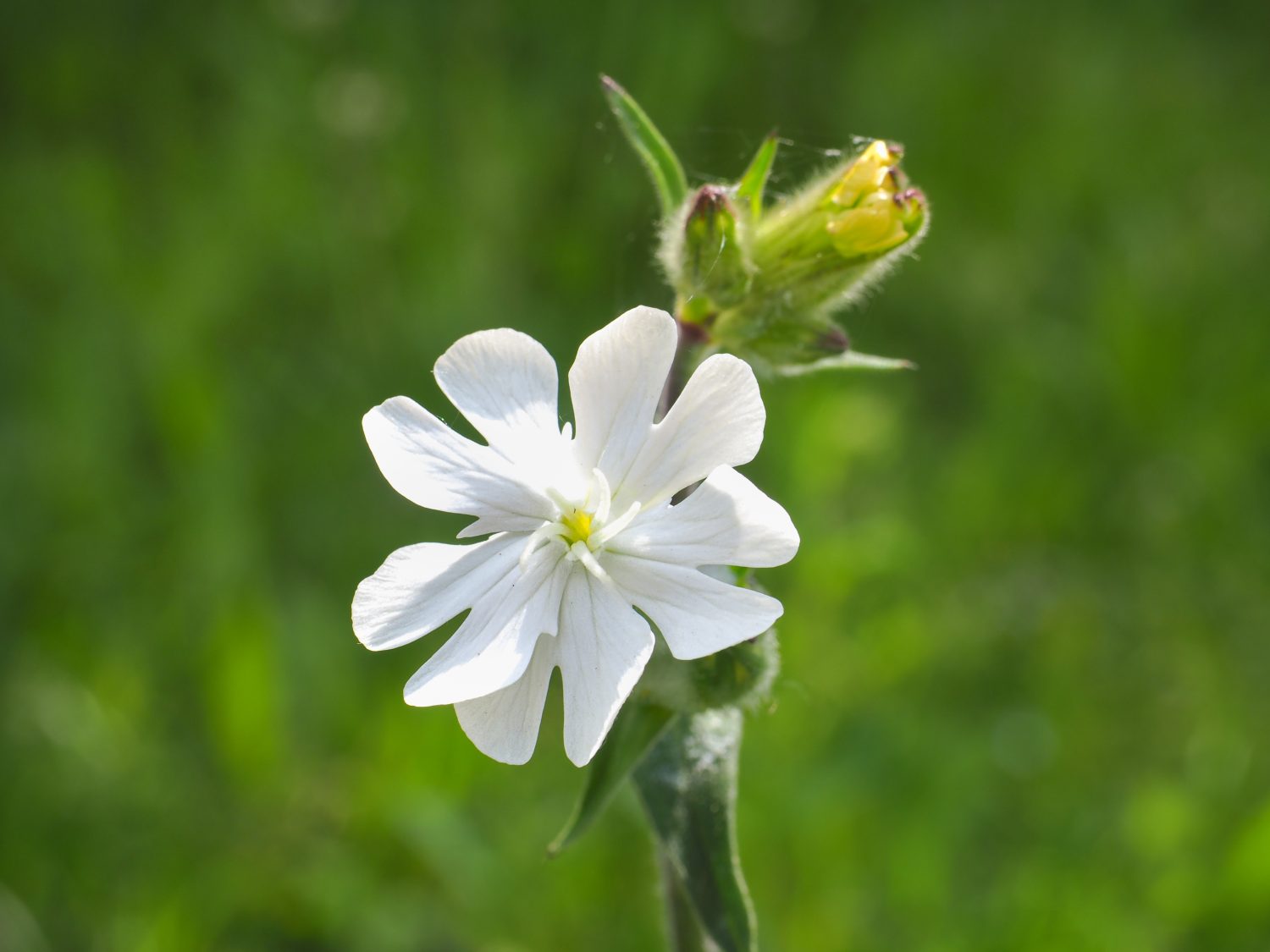
©LifeCollectionPhotography/Shutterstock.com
This unique flower grows on long, green stems and produces delicate white flowers with five petals. While most petals have clefts or splits, some are more subtle than others. Petals with notable clefts are almost heart-shaped, adding to their charm.
This wildflower is self-seeding and resilient, requiring little attention once established. It prefers full sunlight and well-draining soil in USDA zones 5-9.
8. White Clover
Botanical name: Trifolium repens
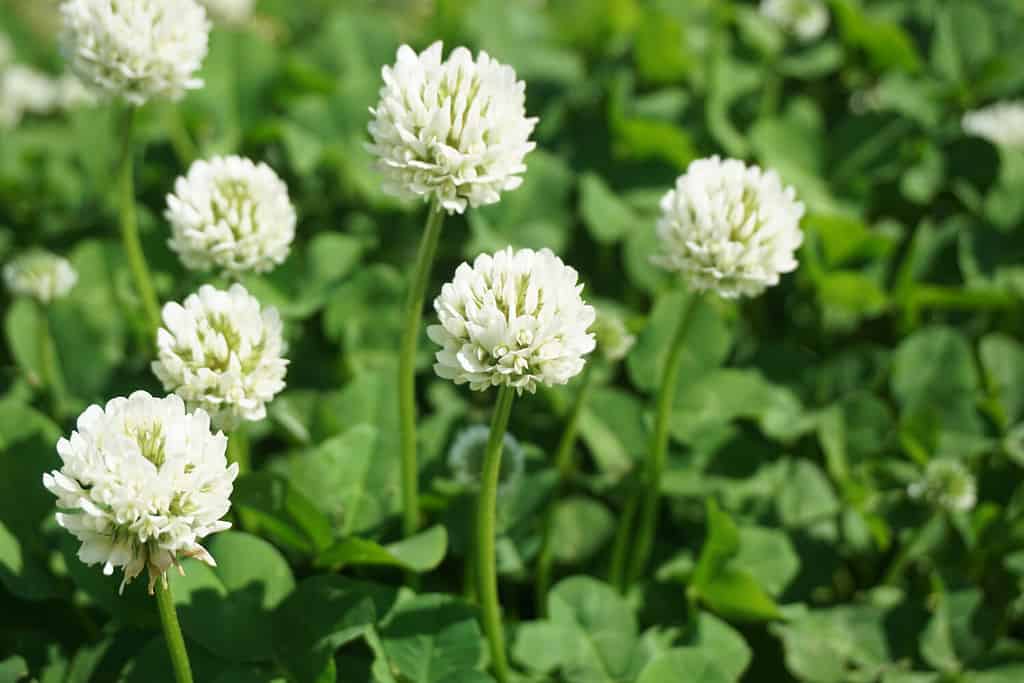
©mamesuke/Shutterstock.com
If you grew up in rural Canada, you’ll recognize the iconic fireworks of white and pink from fields and ditches. The white clover is a wildflower that grows freely in parts of Canada, the United States, and Europe.
White clover is a great ground cover in fields with livestock to provide extra nutrients. It also attracts pollinators. You should consider leaving it unmowed during the early spring to help bees and butterflies get a strong start to the season.
This flowering plant grows in USDA zones 3-10. However, it’s considered invasive in some areas. Be sure to check your local listings before planting white clover.
9. White Sage
Botanical name: Salvia apiana
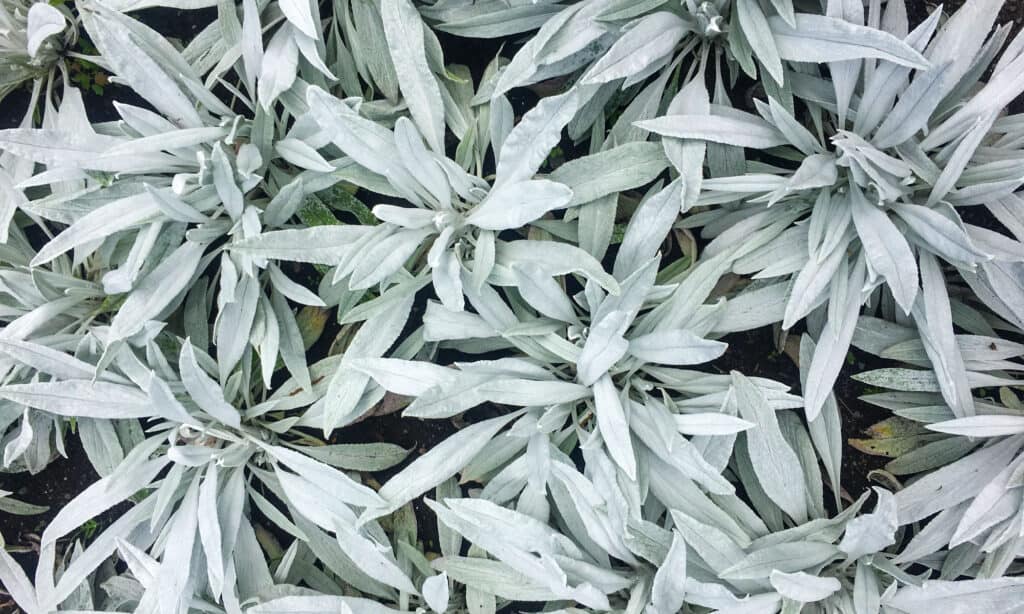
©S. Giz/Shutterstock.com
While there are many varieties of sage in the Salvia genus, white sage offers a unique visual appeal. Its foliage is a silvery white with notes of muted green that make it appear covered by a layer of frost. This aromatic herb attracts pollinators, which is evident in its name; apiana roughly translates to “bee plant.”
It’s important to note that white sage isn’t a culinary herb. This plant is great for incense and attracting bees, but you shouldn’t cook with it or consume it. This warm-loving plant is native to California and parts of the Southern United States. It will grow outdoors in USDA zones with full sunlight and tolerates drought conditions.
10. White Violet
Botanical name: Viola alba
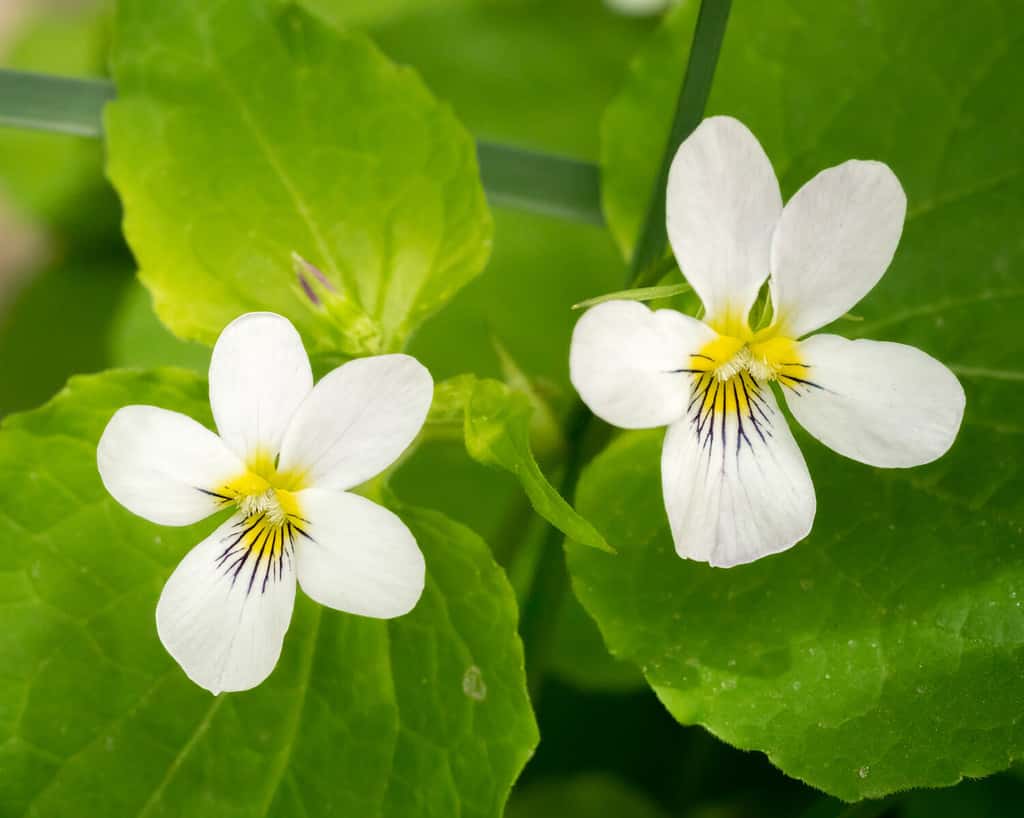
©Dana Henry Photography/Shutterstock.com
While violets are known for their stunning purple-blue hues, the white violet is equally as beautiful. This white wildflower pops up along forest trails and fields during the spring in Canada and the Northern United States. You can also find it in parts of Europe.
White violet doesn’t do well indoors. It prefers indirect sunlight to partial shade and damp, well-draining soil. This cold hardy plant will grow in USDA zones 3-8.
11. Windflower
Botanical name: Anemone spp.
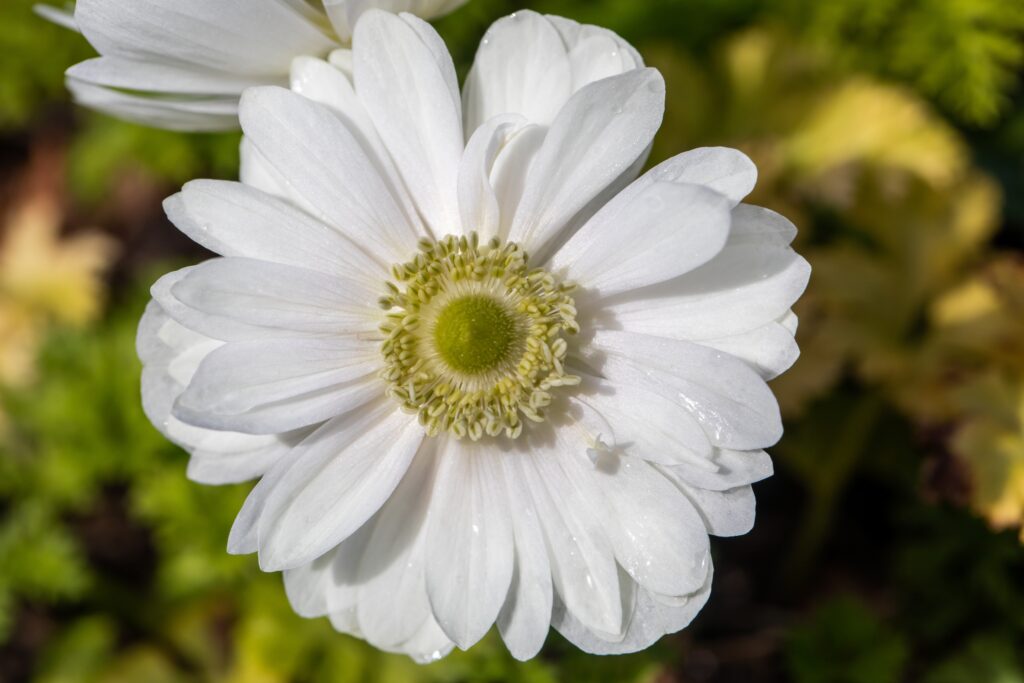
©Photo_Traveller/Shutterstock.com
The windflower is a colloquial term for flowers in the Anemone genus. Flowers in this genus come in a variety of vibrant pinks, whites, yellows, and purples. They’re called windflowers for their delicate swaying in gentle winds, creating a calming effect.
You can find localized species of windflowers almost everywhere throughout the world. They grow in full sunlight in USDA zones 3-10. However, you should look for a naturalized species that will thrive in your local environment.
12. Winter Jasmine
Botanical name: Jasminum polyanthum
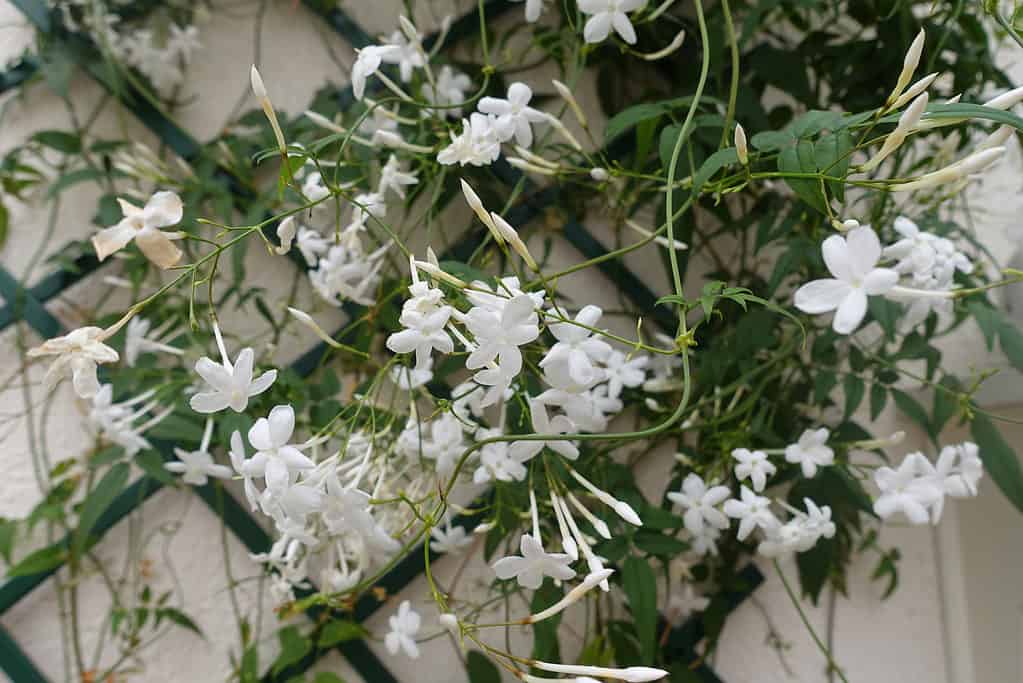
©iStock.com/nobtis
Winter jasmine is a vining perennial plant with delicate white flowers that release an incredible fragrance. This plant is often confused with the other winter jasmine Jasminum nudiflorum, which is less fragrant and has cheerful yellow blooms. Both are technically winter jasmine, but Jasminum polyanthum is the choice if you want the scent used in perfumes and candles.
This plant hails from Asia and prefers partial shade, as it grows under dense canopies in its natural environment. Winter jasmine is cold-sensitive and can only be grown outdoors in USDA zones 9-10. While this plant is high-maintenance when potted, you can grow it indoors.
13. Wisteria
Botanical name: Wisteria spp.
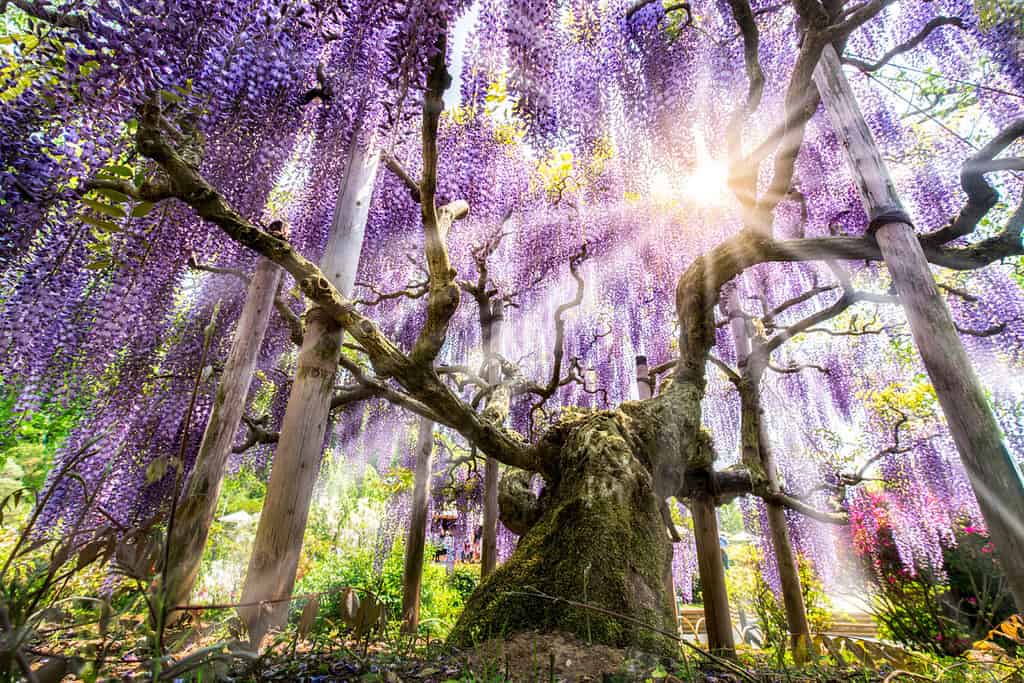
©mapman/Shutterstock.com
There are many species within the Wisteria genus, each with its own unique qualities. Japanese Wisteria (Wisteria floribunda) and Chinese Wisteria (Wisteria sinensis) are perhaps the best known.
These iconic blooms hang in dense purple tendrils, making them perfect for pergolas and trellises. However, Asian cultivars are considered invasive in North America. It’s important to choose American wisteria (Wisteria frutescens) to avoid destroying the local ecosystem if you’re in North America.
With proper care, Wisteria frutescens will grow in USDA zones 5-9. They require full sunlight and a supported structure to bear their weight.
14. Witch Hazel
Botanical name: Hamamelis spp.
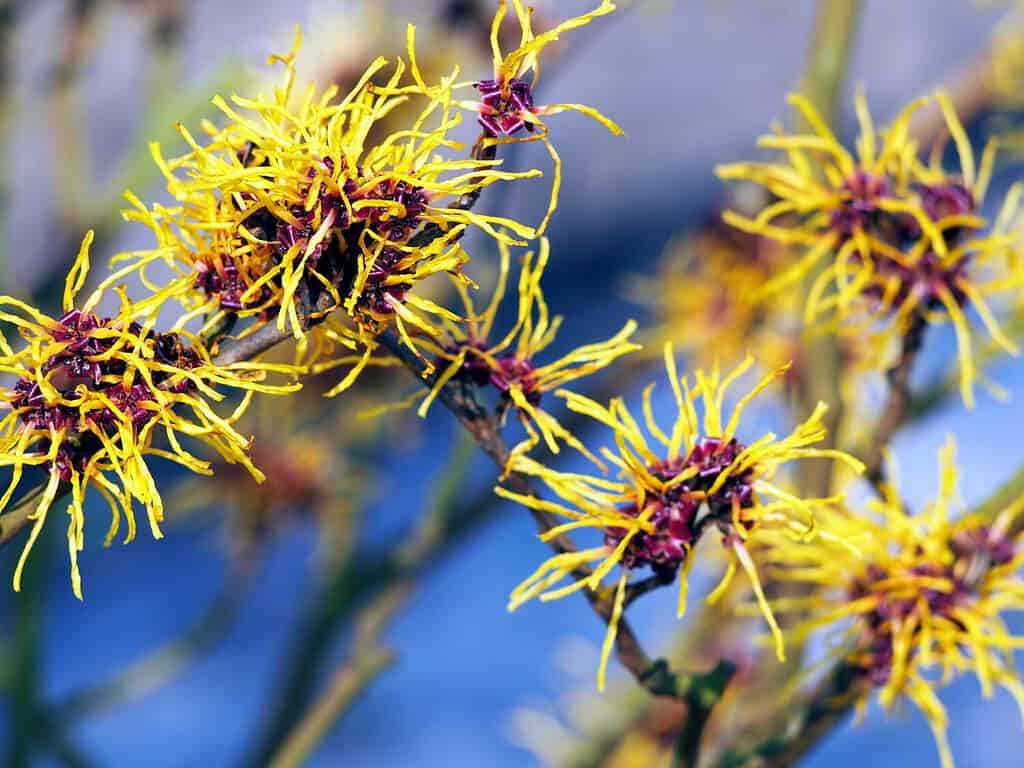
©Anna Gratys/Shutterstock.com
Witch hazel is known for its use in traditional medicine and natural cosmetics. However, with its creepy tendrils and bold yellow flowers, witch hazel plants are a lovely addition to the landscape.
There are many species of witch hazel. However, planting a native species is recommended; in North America, that would be Hamamelis virginiana or Hamamelis vernalis.
Witch hazel plants prefer full sun to partial shade and well-draining soil. These plants grow well in USDA zones 3-9.
15. Woolly Bluecurls
Botanical name: Trichostema lanatum
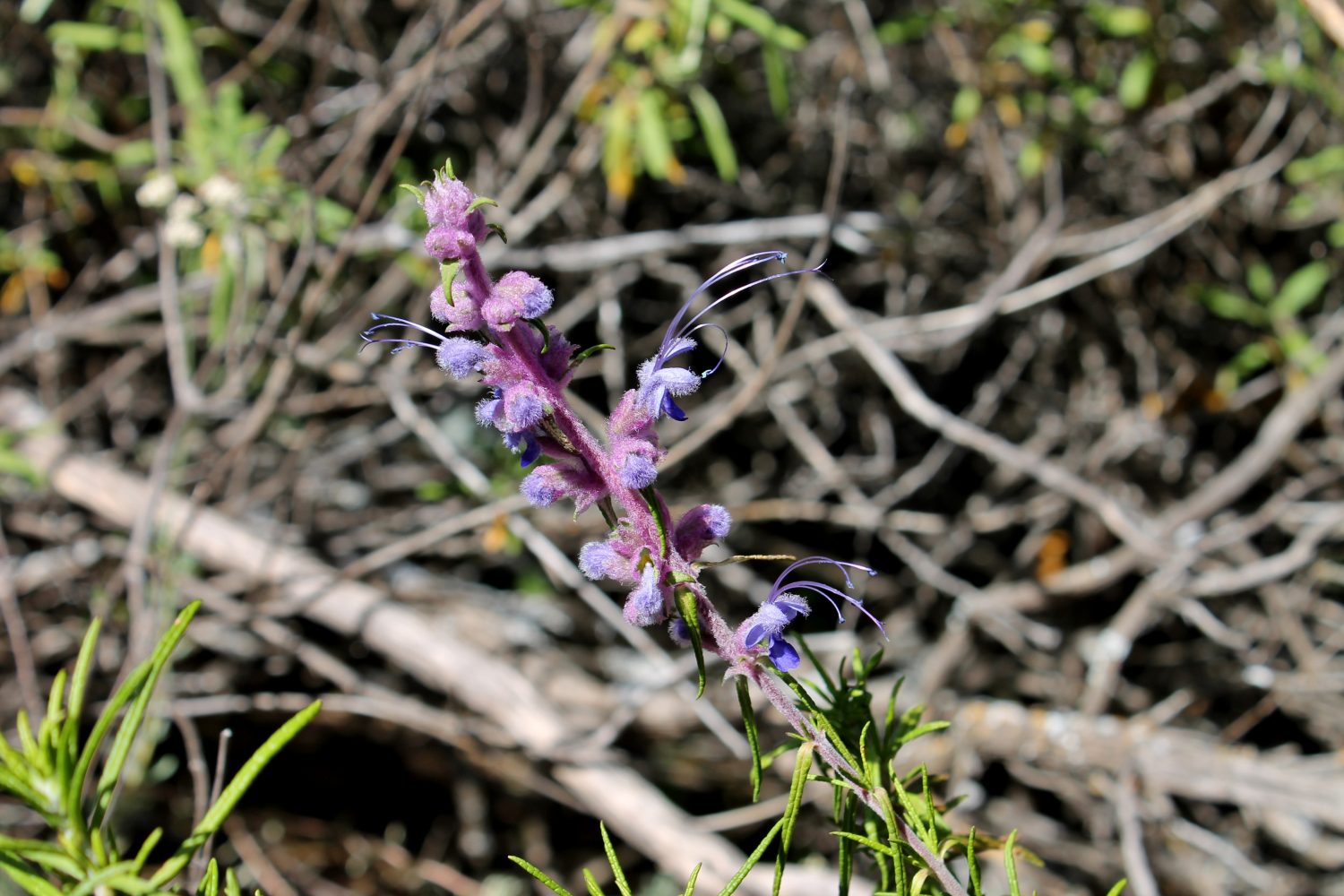
©Orange Grove/Shutterstock.com
One of the most unique plants that start with W, the wooly bluecurls is native to the arid desert regions of California. This branching shrub produces stunning blooms in shades of purple and blue that contrast against their stark sandy environment. The petals are fuzzy with a wool-like coating that gives them their name.
Plant this unique shrub in well-draining soil, watering regularly until it’s established. Then, reduce watering for this drought-tolerant plant. A heat lover, the wooly bluecurls will only grow in USDA zones 8-10.
Plants That Start With W: A Summary
| Ranking | Plants That Start With W |
|---|---|
| 1 | Water Avens |
| 2 | Water Hyacinth |
| 3 | Water Lily |
| 4 | Watercress |
| 5 | Watermelon |
| 6 | Watermelon Peperomia |
| 7 | Wax Myrtle |
| 8 | Western Red Cedar |
| 9 | White Campion |
| 10 | White Clover |
| 11 | White Pine |
| 12 | White Rhododendron |
| 13 | White Sage |
| 14 | White Violet |
| 15 | Wild Bergamot |
| 16 | Wild Columbine |
| 17 | Wild Garlic |
| 18 | Wild Ginger |
| 19 | Wild Quinine |
| 20 | Wild Rose |
| 21 | Windflower |
| 22 | Winter Jasmine |
| 23 | Wisteria |
| 24 | Witch Hazel |
| 25 | Wood Avens |
| 26 | Wooly Bluecurls |
| 27 | Wooly Sunflower |









